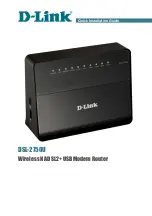
26
MODULAR MODEM ELIMINATOR
2.4 Elastic-Buffer Applications
In a typical elastic-buffer application, the Modular Modem Eliminator connects
two DCEs that operate at the same nominal data rate, but use different timing
sources. This means that data bits are clocked into the Modular Modem Eliminator
at a rate slightly different from the rate at which the data is clocked out. Typical
elastic-buffer applications are transfer of data between the channels of two TDM
data multiplexors connected to different networks (
Figure 2-14
), or connection
of a terminal to a data multiplexor via a modem link provided by the national PTT
administration or by an independent data carrier.
Figure 2-14. Typical elastic-buffer application.
To reduce the number of clock slippages, elastic buffers are used. An elastic
buffer is a first-in, first-out (FIFO) buffer that operates with two clock sources:
a write clock that clocks the data in, and a read clock that clocks the data out.
The Modular Modem Eliminator has two independent 256-bit buffers, one for
each direction of data transmission.
Figure 2-15
on the next page shows data flow
through the Modular Modem Eliminator, and illustrates its connections to the data
equipment.
When you power on the Modular Modem Eliminator, the buffers first fill with
data to the center position (128 bits), then data read-out starts. Any difference
between the write and read rate changes the number of bits stored in the FIFO.
The FIFO can therefore absorb slight rate differences without losing any data bits.
Eventually, however, the FIFO may overflow or underflow, causing loss of data. In
practical cases, the overflow/underflow events are relatively rare; therefore, data
loss is negligible. Upon overflow/underflow, the buffer is reset to the center
position.
Appendix B
provides a description of the FIFO operation and presents methods
for calculating the rate of overflow/underflow events as a function of expected
clock-rate difference.
Multiplexor
X.21
V.36
128 kbps
128 kbps
Multiplexor
Summary of Contents for ME260A
Page 48: ...NOTES...
Page 49: ...NOTES...
















































